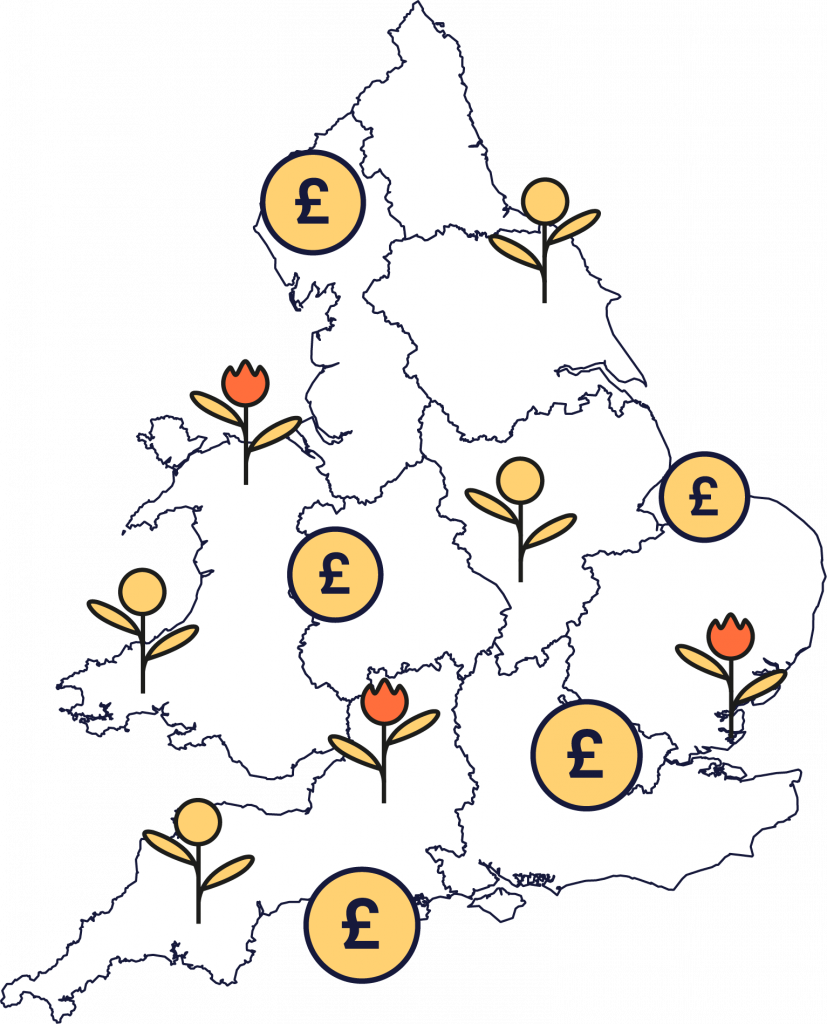Buying a property to rent out has boomed in popularity across the UK over the last 20 years. Many investors have built up sizable property portfolios, and there are around *2.8 million landlords operating – and that’s before you include limited companies.
But most buy-to-let lending is aimed at people who already own their own home. So an interesting question arises: as a first-time buyer who has yet to step onto the housing ladder, is it possible to get approval for a buy-to-let mortgage?
Could you start your property journey as a landlord rather than homeowner? It’s an intriguing proposition for ambitious investors with an entrepreneurial spirit. While challenging, some innovative lenders are now opening the door to first-timers who want to jump straight into buy-to-let.
The appeal of buy-to-let for first-time buyers
Opting for a buy-to-let property rather than buying your own home may seem an unconventional move. For some first-time buyers, however, it’s an appealing path. The idea of earning passive income through a monthly rent can be more enticing than owning your home. Plus, rental yields in England average 4.98% according to internal data from Molo, and some areas are as high as 7%. There’s an opportunity to enjoy healthy margins.
Like any property, buy-to-let homes have the potential for long-term growth. When you combine this with regular rental income that covers expenses and leaves you with something extra, it may just be enough to convince some people to forgo buying a home and hop on the buy-to-let bandwagon instead.
Locations with highest rental yield
- Explore the map
- Calculate expected yield based on your property value
- Calculate the avg. monthly rent and compare results with any location on the map

Challenges for first-time buyer landlords
While the idea of a buy-to-let as a first-time property might be alluring, diving straight in usually means tougher hurdles for first-time buyers with no prior landlord experience. It certainly comes with more conditions than buying a residential home, whether you’re a first-time buyer or not.
For starters, managing a rental property requires learning various legal, tax and property management intricacies. Then there’s the part where you need to find tenants, which often requires using a letting agent. It’s always worth seeking guidance if you’re not comfortable with these responsibilities, as letting and property management companies can reduce the burden for a cost.
Additionally, buy-to-let mortgages typically require far larger deposits than standard residential mortgages – usually 25% and upwards of 40% in some cases. As first-timers tend to have more modest savings built up, financing a sizable initial purchase may be difficult.
Lenders also scrutinise applicants’ affordability much more carefully when it comes to buy-to-let. Can you cover the mortgage payments if you have void periods? For this reason, lenders tend to place more importance on the achievable rental income than they do on annual earnings (although, income is taken into account).
Lender policies on first-time buyer landlords
Historically, getting a buy-to-let mortgage without owning a home first was particularly challenging. The vast majority of lenders outright preferred or even required applicants to have their own residential property already. Their view was that experience managing that asset showed some readiness to handle buy-to-let complexities.
However, a select few lenders, including Molo, are now taking a more open-minded approach to entrepreneurial first-timers. For example, we take applications for standard products from people without any landlord experience, and you can even apply jointly with a maximum of four individuals.
Find out more about our first-time landlords lending criteria
As the market evolves, the possibility of purchasing a buy-to-let property with a mortgage exists if you find the right lender. While there are no guarantees, the tide shows signs of turning with certain progressive-thinking lenders.
How to improve your chance of getting a buy-to-let
Given the barriers first-timers face, what can boost your odds of sealing that inaugural buy-to-let mortgage? Without question, the larger your deposit percentage the better. Even though many lenders require a deposit of at least 25%, anything higher than this will give you more equity in the property and lead to lower monthly mortgage payments.
You should also ensure that your personal financial position looks healthy on paper. Maintain excellent credit history and secure reliable employment or income streams. This further puts lenders at ease that you can handle payments in various conditions.
Finally, and arguably, most important, is the property itself. Look for somewhere that can achieve at least 125% of the annual mortgage repayment in rent. For example, The annual mortgage repayment for a £150,000 mortgage, assuming a 25-year term at a 5% interest rate, is approximately £10,522.62. This translates to a minimum monthly rent of approximately £1,096.11 (which is £13,153.28 divided by 12 months) to meet the investment criteria under these conditions.
It also helps to do the research, underpinning location choice and demand drivers, like nearby transport links, amenities and green spaces. The goal is to make sure the rent comfortably covers the monthly mortgage payments.
Final thoughts: first timers
If it’s your first time diving into the buy-to-let world and you’ve never bought a house before, there are lots of resources and professionals able to advice, be it accounts, mortgage brokers or letting agents. With the right research, and by using lenders like Molo, you can realise your property investment ambitions even if you don’t already own your home.


